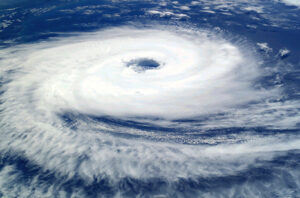PRESIDENT Ferdinand R. Marcos, Jr. on Monday said his government will focus on rescue efforts in isolated areas hit by Super Typhoon Man-Yi (Pepito), as the country seeks to fast-track rebuilding efforts ahead of the holiday season next month.
“We will now carry on with the rescue of those isolated areas and the continuing relief for those who are — who have been displaced and have no means to prepare their own meals and have no water supplies,” he said on the sidelines of an event at the presidential palace. “Rebuilding will also start.”
Mr. Marcos cited a casualty in the province of Camarines Norte following the onslaught of Man-Yi, which made landfall on Catanduanes islands on Saturday night and regained strength on Sunday as it hit the northern province of Aurora.
But the National Disaster Risk Reduction and Management Council (NDRRMC) said later in the day that it had not recorded any casualties due to Man-Yi so far.
It said a 72-year-old man died in the province after getting caught on a hanging cable while riding a motorcycle.
The NDRRMC said in an 8 a.m. report on Monday that Man-Yi as well as two previous cyclones that caused massive flooding in parts of Luzon and Mindanao had affected 675,000 people.
The storms partly hit 7,401 houses and totally damaged 437 others, it said.
Man-Yi, which weakened into a severe tropical storm, exited the Philippine area of responsibility at 12 p.m. on Monday, according to the state weather bureau.
As of 5 p.m., the center of Man-Yi was 410 kilometers (km) west of Laoag City, Ilocos Norte, the Philippine Atmospheric, Geophysical and Astronomical Services Administration (PAGASA) said.
Man-Yi’s maximum wind had gone down to 110 km per hour (kph) from 130 kph, while its gustiness had eased to 135 kph from 160 kph.
At its peak, Man-Yi was a super typhoon with maximum sustained winds reaching 195 kph.
Mr. Marcos, speaking to reporters, lauded efforts at the local levels amid Man-Yi’s onslaught.
“I’m sure that they are exhausted. I am sure that they have done — they continue to do and work as hard as they can.”
The Philippine leader noted that Man-Yi was the sixth tropical cyclone to hit the Philippines in two months.
Mr. Marcos earlier this month said typhoons experienced by his country have been increasingly unpredictable due to the changing climate, and that his government doesn’t have a “template to follow” in terms of response.
The Philippine leader had already expressed frustration for climate change’s economic impacts, saying in October that its damage to the national economy could reach up to 7.6% of the gross domestic product by 2030.
The Philippines has been chosen to host the Board of the Loss and Damage Fund (LDF), a United Nations financing mechanism that will benefit countries vulnerable to climate change, including the host-country itself.
The election followed efforts by the Marcos administration to promote the Philippines as a country that is committed to the global green transition, albeit domestic criticisms over the country’s slow phaseout of carbon-emitting sources of energy and policies that green groups say are anti-environment.
For one, Mr. Marcos has branded himself as a climate leader, citing the need for sustainable practices, and even touting the presence of windmills in his home province in the country’s north.
A 2024 Green Economy Report for Southeast Asia led by Bain & Company said the Philippines saw a 57% increase in “green” investments to $1.46 billion in 2023 but still falls short of the over $16 billion in required capital investments needed for its green transition. — Kyle Aristophere T. Atienza

